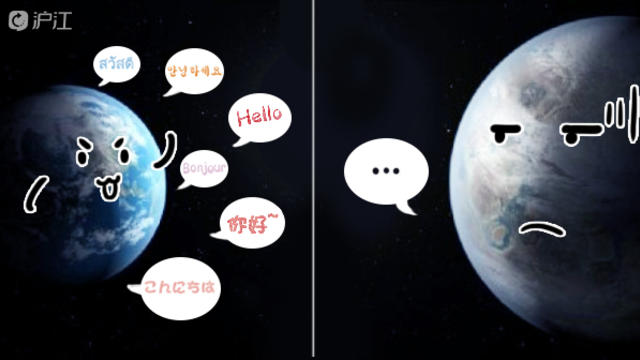四级翻译-胡同
临近四六级考试,最近会发一些四六级翻译的内容。
先是单句呈现,全篇的在文末。其中标注了颜色的,是比较重要的表达。
胡同
1. 单句分析
1. 在北京,胡同(hutong)是由一排排传统四合院(siheyuan)形成的小巷。
In Beijing, hutongs are alleys(小巷) formed by lines of siheyuan, traditional courtyard residences. (同位语解释四合院,是传统的庭院住宅)
2. 四合院相依而连形成“胡同”,胡同与胡同相连形成了许多街区。
One siheyuan stands next to another, and thus a hutong appears. And one hutong stands next to another, thus forming a neighborhood.
3. 古时候,高官和富商的四合院中,房屋雕梁画栋,庭院景观秀美,成排宽敞的房屋与围墙隔断的花园形成了井然有序的胡同。老百姓的四合院规模小,设计装饰简单,形成的胡同较为狭窄。【这句比较难,稍微看下即可】
In ancient times, the siheyuan of high-ranking officials and wealthy merchants often featured(动词,具有……的特点) beautifully carved and painted roof beams and pillars and carefully landscaped gardens(处理为:雕刻以及绘画精美的梁、栋 and 景观秀美的庭院). The hutongs they formed were orderly (形容词:有序的), lined by spacious homes and walled gardens(这里的wall是动词,因此 walled gardens 表示围墙隔开的花园). The siheyuan of commoners were far smaller in scale and simpler in design and decoration, and the hutongs were narrower.
4. “胡同” 这个词最早出现在元代,被认为是出自于蒙古语,最初是“水井”的意思。
The term "hutong" appeared (注意时态,一般过去时) first during the Yuan Dynasty, and is believed to be(注意时态:一般现在时,且用到了被动语态) a term of Mongolian language originally meaning "wells”.
【一句话中可以有不同的时态,根据每个动作表达的意思来定】
5. 胡同是北京文化元素的一个重要代表。由于北京悠长的历史和六朝古都的地位,每条胡同都有它的趣闻掌故,有些甚至与历史事件相关。
Hutongs represent(这句的谓语动词) an important cultural element of Beijing. Thanks to Beijing's long history and status as the capital for six dynasties, almost every hutong has its anecdotes, and some are even associated with historic events.
6. 与紫禁城、颐和园、天坛的宫廷生活和贵族文化形成鲜明对比,胡同可以说是北京平民文化的代表。胡同是居民休养生息的场所,是老北京的心脏。
In stark contrast to the court life and elite culture represented by the Forbidden City, Summer Palace, and the Temple of Heaven, the hutongs reflect(本句的谓语动词) the culture of grassroots Beijingers. The hutongs are residential neighborhoods and also the heart of Old Beijing.
2. 重点词汇/词组
1. 古时候
in ancient times
2. 高官
high-ranking officials; senior officials
3. 历史事件
historic events
4. 文化元素
a cultural element (复数: cultural elements)
5. 六朝古都
capital for six dynasties
6. 与……形成鲜明对比
in stark contrast to…
7. 宫廷生活
court life
8. 贵族文化
elite/aristocratic/noble culture
9. grassroots n. 基层,基础;可以用作定语名词,来修饰另一个名词,如 a grassroots movement 群众运动
3. 全篇
在北京,胡同(hutong)是由一排排传统四合院(siheyuan)形成的小巷。四合院相依而连形成“胡同”,胡同与胡同相连形成了许多街区。
古时候,高官和富商的四合院中,房屋雕梁画栋,庭院景观秀美,成排宽敞的房屋与围墙隔断的花园形成了井然有序的胡同。老百姓的四合院规模小,设计装饰简单,形成的胡同较为狭窄。
“胡同” 这个词最早出现在元代,被认为是出自于蒙古语,最初是“水井”的意思。
胡同是北京文化元素的一个重要代表。由于北京悠长的历史和六朝古都的地位,每条胡同都有它的趣闻掌故,有些甚至与历史事件相关。
与紫禁城、颐和园、天坛的宫廷生活和贵族文化形成鲜明对比,胡同可以说是北京平民文化的代表。胡同是居民休养生息的场所,是老北京的心脏。
In Beijing, hutongs are alleys formed by lines of siheyuan, traditional courtyard residences. Many neighborhoods were formed by joining one siheyuan (四合院)to another to form a hutong, and then joining one hutong to another.
In ancient times, the large siheyuan of high-ranking officials and wealthy merchants often featured beautifully carved and painted roof beams(梁)and pillars(柱子) and carefully landscaped gardens. The hutongs they formed were orderly, lined by spacious homes and walled gardens. The siheyuan of commoners were far smaller in scale and simpler in design and decoration, and the hutongs were narrower.
The term "hutong" appeared first during the Yuan Dynasty, and is believed to be a term of Mongolian language originally meaning "wells".
Hutongs represent an important cultural element of Beijing. Thanks to Beijing's long history and status as the capital for six dynasties, almost every hutong has its anecdotes, and some are even associated with historic events.
In stark contrast to the court life and elite culture represented by the Forbidden City, Summer Palace, and the Temple of Heaven, the hutongs reflect the culture of grassroots Beijingers. The hutongs are residential neighborhoods and also the heart of Old Beijing.
最后嘱咐:翻译写作这种偏主观的题目,只看是完全不够的。所以一定要自己动笔写!!!写得不好不要怕,就是因为写不好,才要平时多写,写完之后改,这样一点点进步!!











